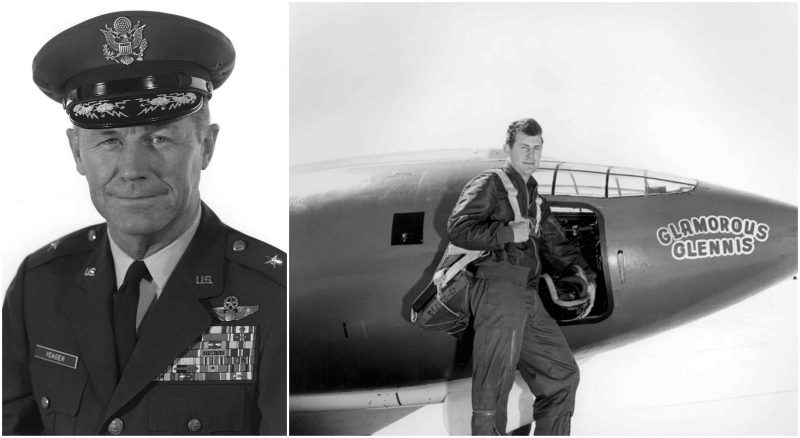Chuck Yeager is a retired American test pilot who was the first person to break the sound barrier — the point where a speeding object (such as an airplane) passes the speed of sound.
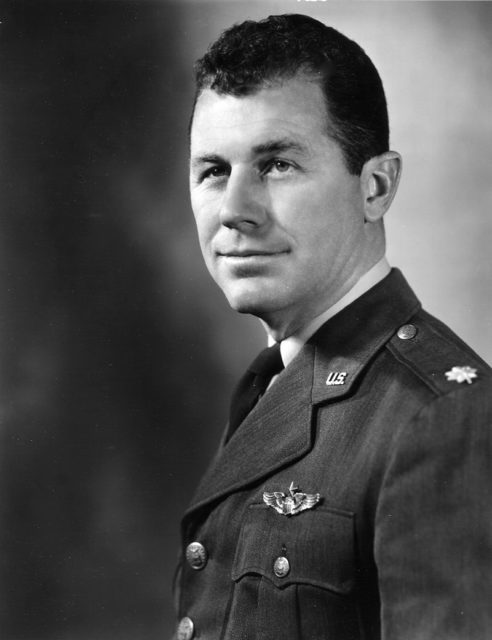
Charles Elwood Yeager was born in 1923, in West Virginia. After he graduated from high school he enlisted in the Army Air Corps. It was at the time when the WWII began when he started his career as a pilot. He showed extordinary skilld as an aircraft mechanics and pilot and he soon became a P-51 fighter pilot.
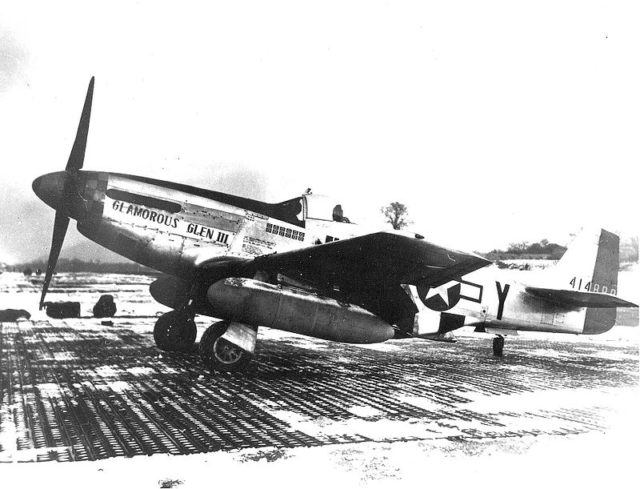
Soon after he was assigned to the Eighth Air Force for combat operations in World War II his P-51 Mustang was shot down over France, but Yeager evaded capture and escaped to Spain. Instead of going home, Yeager was willing to stay on the front and he got his request approved. So he stayed.
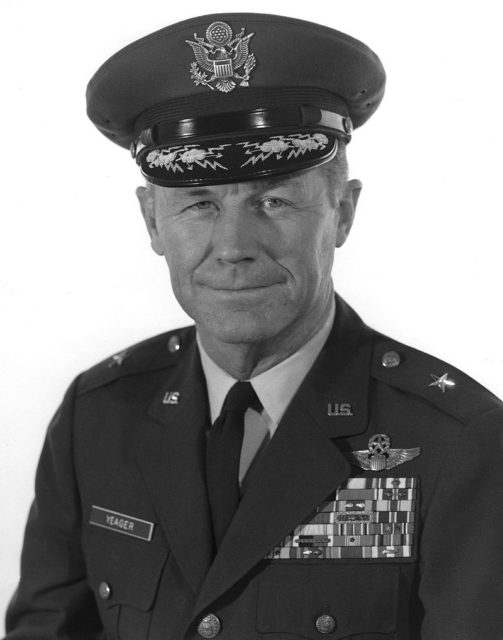
He was first commissioned a second lieutenant and later promoted to captain before going home. When he got back he had 61 mission and returned home. Since he was an evader, he could choose the assignments he was willing to do. He and his wife expected a child during this time, so he chose Wright Field to be close to his home in West Virginia.
His experience during the war and his skills got him the position of functional test pilot of repaired aircraft under the command of Colonel Albert Boyd, head of the Aeronautical Systems Flight Test Division.
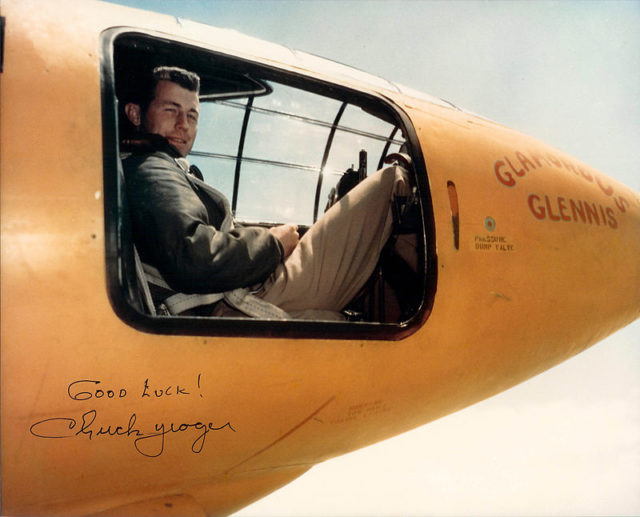
Yeager remained in the Air Force after the war, becoming a test pilot at Muroc Army Air Field (now Edwards Air Force Base). After Bell Aircraft test pilot “Slick” Goodlin demanded $150,000 ($1.6 million in 2015 dollars) to break the sound “barrier,” the USAAF selected Yeager to fly the rocket-powered Bell XS-1 in an NACA program to research high-speed flight.
Just two days before the Big Day he fell off a horse and broke two ribs. Not even doubting of compromising the mission for his health, he shared the bad news only with his wife and a local doctor who taped his injury. He also told about it to a friend and to his fellow project pilot and they remained the only people aware of his secret the day he got on the plane. He was in such pain that he couldn’t even seal the X-1’s hatch by himself. Ridley – his fellow pilot- rigged up a device, using the end of a broom handle as an extra lever, to allow Yeager to seal the hatch.
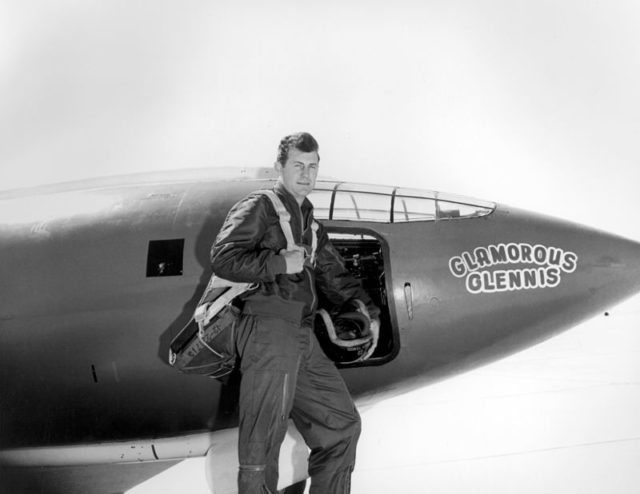
Despite his pain, he did reach a top speed of 700 mph at 43,000 feet on the 14th of October and became the first person to break the sound barrier. In 1948, he received the MacKay and Collier Trophies and in 1954, the Harmon International Trophy. The X-1 he flew that day is now part of the collection of the Smithsonian Institution’s National Air and Space Museum.
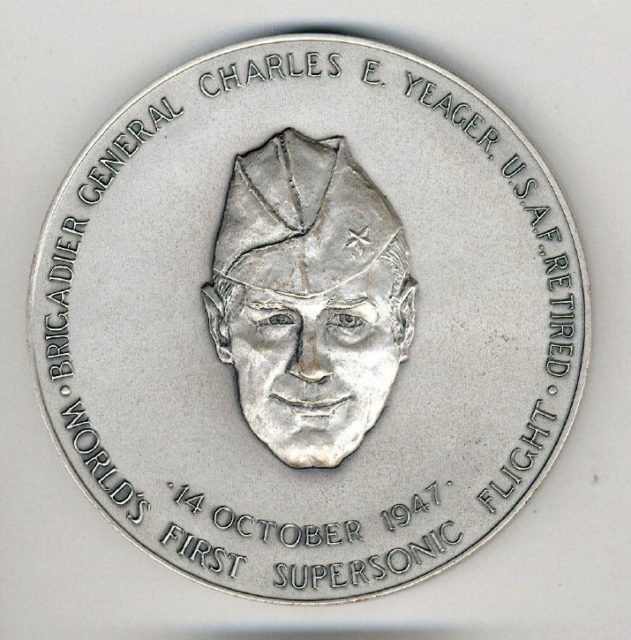
Further in his life, Yeager broke many other speed and altitude records, without his ribs broken. He was also one of the first American pilots to fly a MiG-15, after its pilot, No Kum-Sok, defected to South Korea.
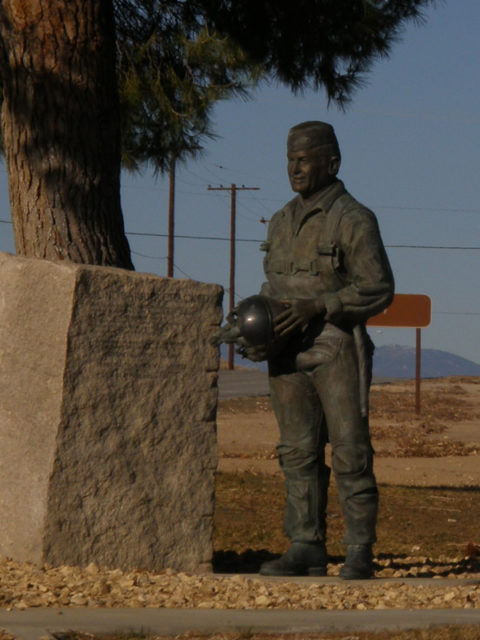
Yeager is now retired from military test flying but is still passionate about his job. At the 65th anniversary of breaking the sound barrier, Yeager, without any doubt, did it again at the age of 89, riding in a McDonnell Douglas F-15 Eagle.
